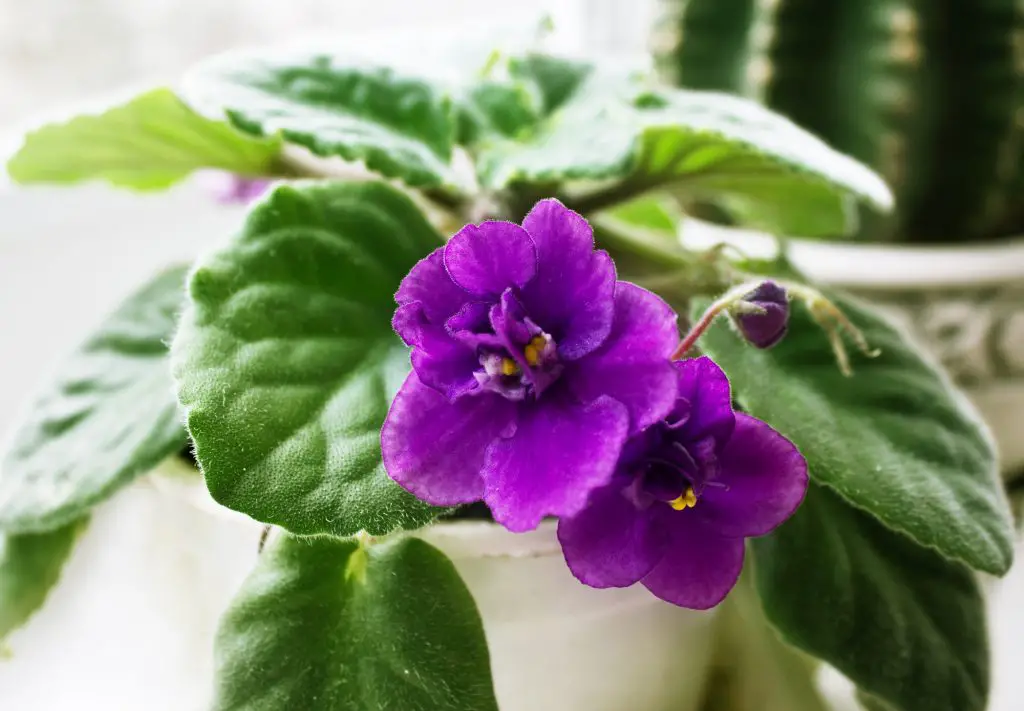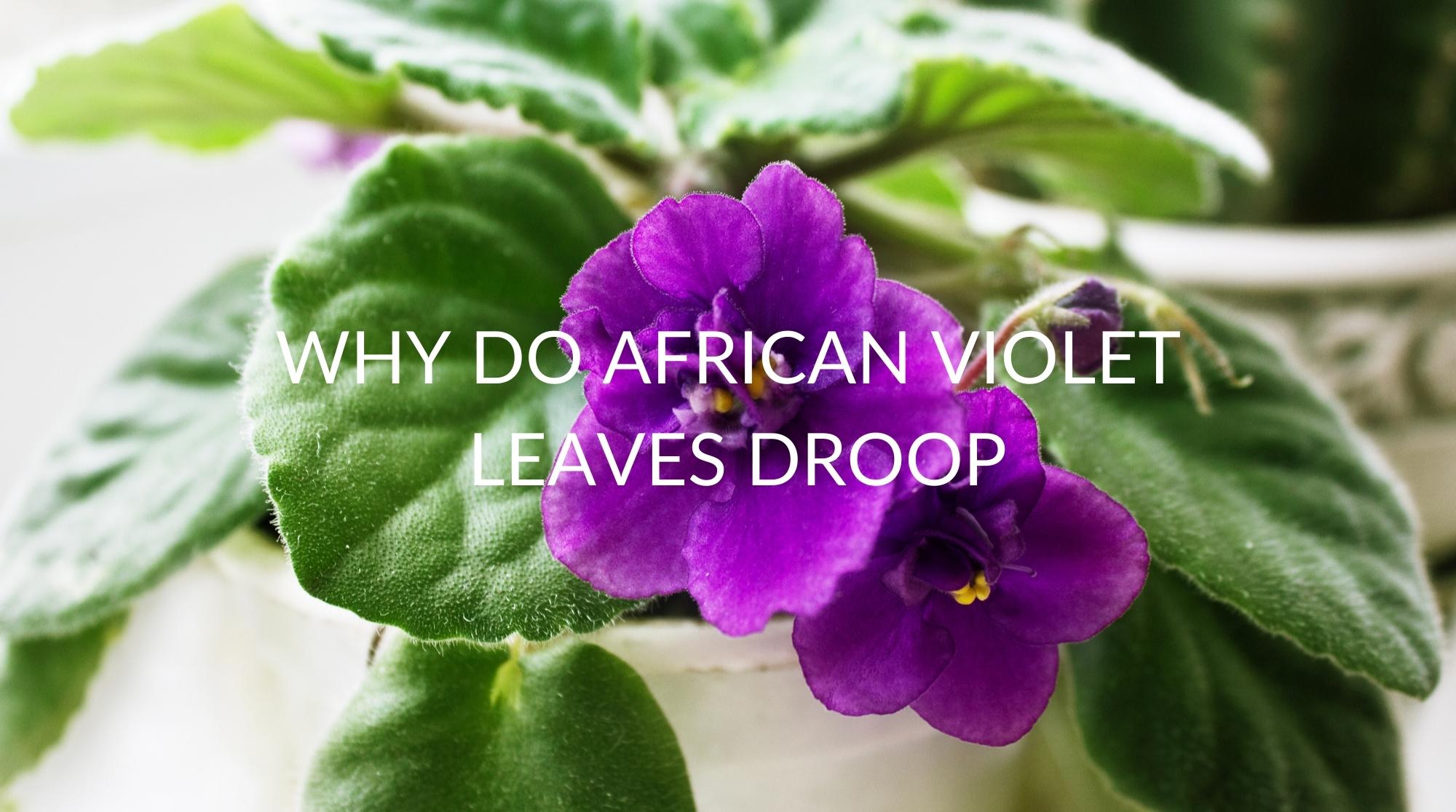There are many different causes for your African Violet’s leaves to droop, including overwatering, too much sunlight, and excessive heat. The African violet is a popular houseplant, but many times this delicate plant will wilt and die quickly if not cared for properly.
Let’s discuss some of the common reasons that your African violet’s leaves are drooping. We’ll talk about watering methods, sunlight, temperatures, and more ways to care for your plant and return it to better shape.
Why Do African Violet Leaves Droop?
The African violet is a sub-tropical plant that is used to live and thrive on forest floors throughout African rainforests in Tanzania. The ‘violet’ in the name is for the vivid violet flowers that bloom on the plant throughout the spring. Found in many homes, the African violet is a great plant to grow indoors, providing it has the right amount of nutrients.
A sensitive plant by nature, African violets that are grown as houseplants are commonly found to have droopy leaves. The African violet shows droopy leaves whenever it has been over or under watered, isn’t getting the proper amount of sunlight, or has been over-fertilized.
How to Fix an African Violet With Droopy Leaves
To fix the drooping leaves on an African violet, you must first determine the cause of the drooping. Because overwatering is the most common cause, check the soil of the plant first. The soil should be moist to the touch but not overly wet.
If you rule out overwatering as the source of the drooping leaves, check to see if the plant is too dry, too hot or cold, or has gotten too much fertilizer.

Other Causes of an African Violet With Droopy Leaves
Once you’ve checked your African violet’s water intake and determined that it was not the cause of its drooping leaves, you should check on the other factors that could make your African violet wilt and droop. Start by determining if the plant is getting enough or too much light and heat, and then move on to checking your fertilizer if the environment isn’t giving you any clues.
Droopy Leaves From Overwatering
Overwatering your African violet is the number one cause of drooping leaves on the plant. African violet plants have a very delicate root system. When the plant is overwatered, it can cause a condition within the plant called root rot. This happens when there is no proper drainage, and the plant sits in undrained water for an extended period of time.
If your African violet is experiencing droopy leaves with yellow coloring and wilting, you may want to check for root rot. This is especially true if the soil on top is wet to the touch. Another way to check for root rot without removing the plant from the pot is to smell the soil.
If the soil smells musty, old, or moldy, there is a good chance your plant is suffering from root rot. When you’ve overwatered your plant and created root rot, the treatment is to remove the plant and all of the old soil and replant it into fresh soil.
Wondering whether your African Violets like to be crowded? Click here!
Be sure to trim the roots before repotting to remove most of the wet and rotted plant material. Use specialty soil that helps balance the pH and provides good drainage when repotting.
Droopy Leaves From Underwatering
Just as your African violet can have too much water, not getting enough water can also cause the plant’s leaves to droop. You can tell if your plant needs water by feeling the leaves. If the leaves are droopy but crunchy and turning brown, your plant needs water.
You can also look at the soil to determine if underwatering is causing your droopy leaves. If the soil is dry, compacted, or starting to gap, your plant needs a good healthy drink of water. Take care not to over-water your plant if it is very dry, as drenching your plant when it is dry can cause plant drowning and shock.
When watering your African violet plant, be sure to use the bottom watering method. This will ensure that your plant gets the exact amount of water that it needs.
To bottom water, place your potted plant into a sink, tub, or another large bucket. Put water into the container and leave for 2-3 hours. During that time, the African violet will soak up the desired amount of water from the bottom of the pot.
Droopy Leaves From Too Much Sunlight
While you might think that a plant with ‘Africa’ in its name would thrive in very high lighting conditions, the opposite for the African violet plant is true. Because the African violet grows close to the ground and deep under the forest canopy, it thrives best of all in low light conditions.
If your African violet is experiencing droopy leaves with yellowing on the edges, crisping, or falling completely off, then you are giving your plant too much sun. In order to solve this issue, try moving your plant to a different location away from direct sunlight.
African violets enjoy low, indirect sunlight. Placing your plant in a bathroom or another dark location is a great way to be sure that your plant isn’t getting too much sunlight.
Excessive Heat Causing Droopy African Violet Leaves
If your African violet has droopy leaves that are yellow, brown, or scorched, then you probably have your plant in an environment that is too hot.
The African violet plant likes to stay between 68 and 85 degrees Fahrenheit. If your African violet is exposed to temperatures in excess of 85 degrees, there is a scorching risk to the plant. Because African violets live on the forest floor naturally, they enjoy cooler temperatures than most tropical plants.
Place your plant in a room that stays between the preferred temperature for the plant, and you will decrease the risk of drooping leaves from excessive heat.
Droopy Leaves Due to Lack of Heat
Just like with too much heat, the leaves of the African violet will droop when there is an insufficient amount of heat as well. When the African violet plant is left in cold temperatures, the plant’s leaves will start to droop and turn mushy.
Drooping Leaves Caused by Over Fertilization
While using fertilizer in the African violet is important, over-fertilizing the plant can lead to stunted growth, frail stems and roots, and droopy leaves. Most common houseplant fertilizers can cause a buildup of salt on the soil that makes it hard to take in water. So even if you’re not underwatering your plant, the buildup from excess fertilizer could be inhibiting the plant from drinking.
It is critical that you only fertilize your African violet during the plant’s normal growing season. For African violets, this is during spring and summer. You’ll want to choose a fertilizer that is high in phosphorus. Most pre-bagged soils will contain fertilizer so keep that in mind when repotting that you don’t over-fertilize.
Meta Description: If you have an African violet plant with drooping leaves, then you may have a serious problem. Find out why your plant has drooping leaves and how you can fix them here.







